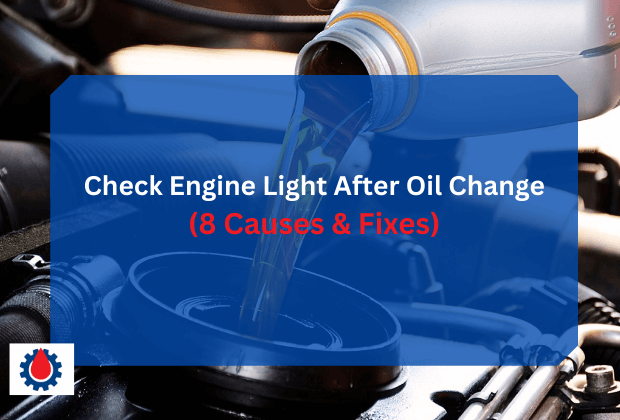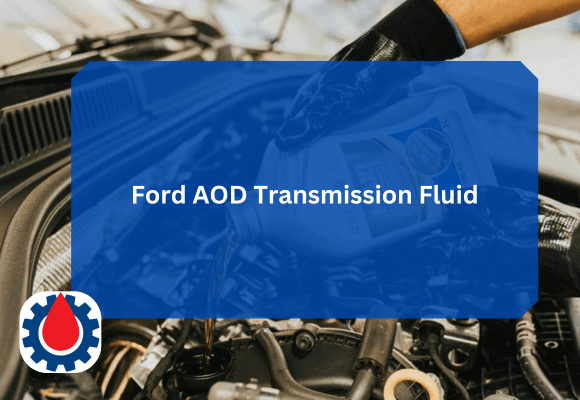Seeing your check engine light turn on after an oil change can be concerning. You might wonder if something went wrong during the process or if it’s just a coincidence.
In this post, we’ll explore the most common reasons why your check engine light might come on after an oil change, how to diagnose the problem, and what you can do to fix it.

Check Engine Light After Oil Change
1. Oil Cap Not Tightened Properly
One of the simplest and most overlooked causes of a check engine light after an oil change is a loose or missing oil cap. The oil cap seals the engine’s oil system, and if it’s not properly secured, it can cause vacuum leaks and trigger the check engine light.
Fix:
- Turn off your engine and let it cool down.
- Open the hood and check if the oil cap is securely fastened.
- If it’s loose, tighten it properly and restart your car to see if the light goes off.
2. Overfilled or Underfilled Oil
Adding too much or too little oil can affect engine performance. Overfilling can cause excessive pressure, leading to leaks or engine damage, while underfilling can lead to insufficient lubrication, causing engine strain.
Fix:
- Check your car’s dipstick to ensure the oil level is within the recommended range.
- If overfilled, drain excess oil. If underfilled, add the right amount.
Read Engine Oil Change Soon(Here’s How Long You Can REALLY Wait!)
3. Wrong Type of Oil Used
Using the wrong viscosity or type of oil can cause improper lubrication, leading to increased friction and engine performance issues. Some modern vehicles have sensors that can detect changes in oil viscosity, which might trigger the check engine light.
Fix:
- Refer to your vehicle’s manual for the correct oil type.
- If incorrect oil was used, consider draining and refilling with the right one.
4. Oil Filter Issues
If the oil filter is not installed correctly or is of poor quality, it can cause restricted oil flow, affecting engine performance and triggering the check engine light.
Fix:
- Ensure the oil filter is installed correctly and is of good quality.
- If you suspect a faulty filter, replace it with an OEM (Original Equipment Manufacturer) or high-quality aftermarket filter.
Read Car Engine Oil Color Chart(Color That Signals Immediate Danger)
5. Oil Pressure Sensor Triggered
After an oil change, if oil pressure fluctuates due to a temporary clog, air pockets, or improper oil levels, it can cause the oil pressure sensor to activate the check engine light.
Fix:
- Turn off the engine and wait a few minutes. Restart and see if the light disappears.
- If the light persists, a diagnostic scan might be needed to check for oil pressure issues.
6. Unplugged or Damaged Sensor
Sometimes, during an oil change, a technician may accidentally unplug or damage a nearby sensor, such as the oil pressure sensor or oxygen sensor, leading to a check engine light.
Fix:
- Inspect the engine bay for any loose or disconnected wires.
- If a sensor is unplugged, reconnect it securely.
- If a sensor appears damaged, it may need to be replaced.
Read How Does Triax Engine Repair Oil Work(Save Your Engine and Wallet)
7. Residual Oil Spills on Engine Components
If oil spills onto the engine or nearby components during an oil change, it can cause smoke, burning smells, or even trigger sensors that lead to a check engine light.
Fix:
- Wipe off any spilled oil from engine components.
- Allow any remaining oil to burn off during normal driving.
8. Pre-Existing Engine Issues
Sometimes, the check engine light coming on after an oil change may be unrelated to the service. If your vehicle had underlying issues before the oil change, such as a failing oxygen sensor, clogged catalytic converter, or misfiring cylinder, the light may have just coincidentally turned on afterward.
Fix:
- Use an OBD-II scanner to check for diagnostic trouble codes (DTCs).
- Address any pre-existing issues accordingly.
How to Diagnose the Check Engine Light After an Oil Change
Step 1: Check the Oil Cap and Dipstick
Ensure the oil cap is properly secured and the oil level is correct.
Step 2: Inspect for Leaks or Spills
Look for any oil leaks under your vehicle and wipe off any excess oil from the engine bay.
Read Diesel Engine Oil Additives(Benefits & Top Oil Additives)
Step 3: Scan for Error Codes
Use an OBD-II scanner to read trouble codes from your car’s computer. Common codes related to oil issues include:
- P0520 (Oil pressure sensor issue)
- P0521 (Oil pressure range/performance problem)
- P0171 or P0174 (Lean fuel mixture, which could be caused by a vacuum leak from an open oil cap)
Step 4: Check Sensors and Wiring
Ensure all sensors and wires around the oil filter and drain plug area are intact and properly connected.
Step 5: Reset the Check Engine Light
If no serious issues are found, you can try resetting the check engine light by disconnecting the car battery for about 10–15 minutes. If the light stays off, the issue may have been minor. If it comes back on, further diagnosis is needed.
Read Normal Oil Pressure for Diesel Engines(Norma Pressure Range)
When to Seek Professional Help
If your check engine light remains on after checking the above factors, it’s best to have a professional mechanic inspect your vehicle. Seek help if:
- The engine is making unusual noises.
- The car is running rough or stalling.
- There’s excessive smoke from the exhaust.
- The light is flashing (indicating a serious issue).
FAQ
Why do I have a check engine light after an oil change?
The check engine light can come on after an oil change for several reasons, including:
- Loose or missing oil cap – If the oil cap is not secured properly, it can trigger a vacuum leak, causing the light to come on.
- Overfilled or underfilled oil – Incorrect oil levels can impact engine performance and set off sensors.
- Wrong oil type – Using the wrong viscosity or oil quality can affect engine function.
- Oil pressure sensor issues – If the sensor detects fluctuating oil pressure after the change, it may trigger the light.
- Unplugged or damaged sensor – A nearby sensor may have been accidentally disconnected during the service.
- Residual oil spills – Oil dripping onto engine components can trigger warning sensors.
- Pre-existing issues – If your vehicle had an unresolved issue before the oil change, the light may have coincided.
How long does it take for the check engine light to reset after an oil change?
If the issue is minor (like a loose cap or temporary sensor reading), the check engine light may turn off after a few driving cycles typically within 10 to 30 miles of driving. However, if the issue persists, you may need to manually reset the light or fix the underlying problem.
How to reset the engine light after an oil change?
If the check engine light remains on after verifying everything, you can try resetting it:
- Use an OBD-II Scanner
- Plug the scanner into the OBD-II port (usually under the dashboard).
- Read and clear the trouble codes.
- Disconnect the Battery
- Turn off the engine and remove the negative battery terminal.
- Wait 10–15 minutes, then reconnect and start the car.
- Drive Normally
- If the light was triggered by a minor issue, it may turn off automatically after a few drive cycles.
If the light comes back on, further diagnosis is required.
Can an oil change turn the engine light on?
Yes, an oil change can sometimes cause the engine light to come on due to:
- Incorrect oil level or type.
- A sensor getting unplugged or malfunctioning.
- Oil spills cause temporary smoke or sensor issues.
- A pre-existing issue surfacing coincidentally.
If your vehicle is running normally, check for simple causes like a loose cap or oil level issues before seeking further diagnosis.
Read How to Clean Funnel After Oil Change(Don’t Make These Mistakes)
Can an overdue oil change cause a check engine light?
Yes, delaying an oil change can trigger the check engine light. Old, dirty oil can:
- Reduce lubrication and cause engine strain.
- Clog oil passages, leading to low oil pressure.
- Cause increased engine wear, potentially leading to misfires or sensor failures.
If your oil is overdue for a change and the check engine light is on, changing the oil promptly may resolve the issue.
Can I drive with the check engine light on?
It depends on whether the light is steady or flashing:
Steady Check Engine Light:
- Likely a minor issue (e.g., sensor error, loose cap).
- Safe to drive short distances but should be checked soon.
Flashing Check Engine Light:
- Indicates a serious issue (e.g., misfire, severe engine damage risk).
- Driving further can cause costly damage—get it inspected immediately.
If you’re unsure, use an OBD-II scanner or visit a mechanic to diagnose the problem.
Read Engine Oils for 3.5 EcoBoost(5 Best Engine Oil)
Final word
If the issue persists, consulting a professional mechanic is the best course of action. Keeping up with proper maintenance and careful handling during oil changes can help prevent these problems in the future.




